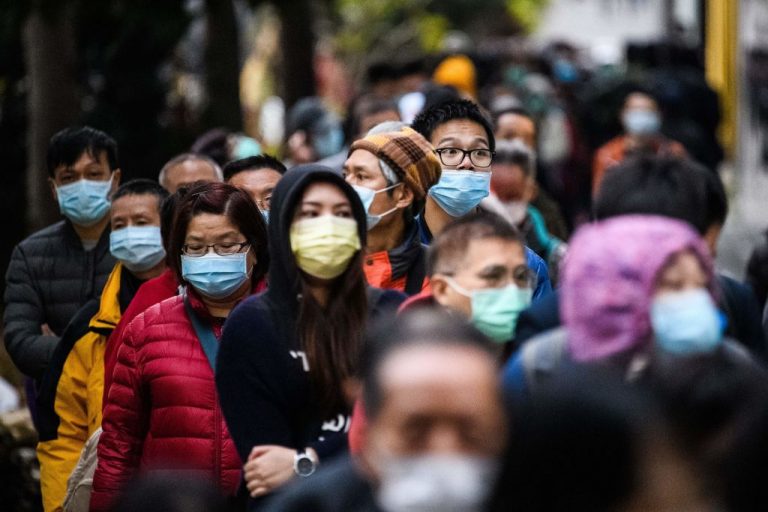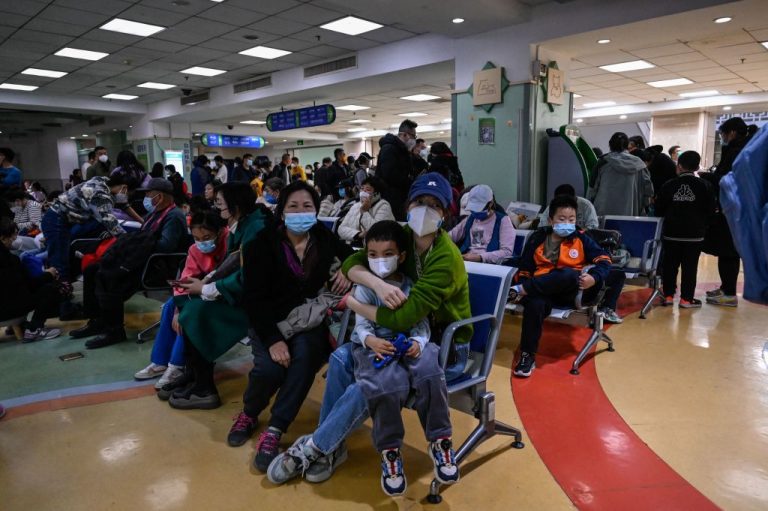A new peer reviewed study published in a medical journal theorizes that excess inhalation of carbon dioxide, a substance toxic above small amounts, may be the factor behind a difficult to explain spike in reproductive issues and miscarriages and stillbirths following Coronavirus Disease 2019 (COVID-19).
“According to the medical principle of ‘primum nihil nocere’ (at first do not harm) and in view of the presented findings, the mask would have to be scientifically re-evaluated as a SARS-CoV-2 pandemic control,” writes a quintet of five German scientists dissenting from the establishment narrative.
The study, titled Possible Toxicity of Chronic Carbon Dioxide Exposure Associated With Face Mask Use, Particularly In Pregnant Women, Children And Adolescents – A Scoping Review was published in the journal Heliyon by CellPress on March 2.
Its form is that of a review study, meaning researchers fanned through thousands of published scientific literature “in MEDLINE, Cochrane Library and the World Health Organization COVID‐19 Database up until November 30, 2021 on toxic effects of low-level carbon dioxide (≤3%) including mask effects on carbon dioxide breathing.”
MORE ON REPRODUCTIVE ISSUES AND THE PANDEMIC
- VAERS Data Shows Dozens of Miscarriages, Stillbirths After COVID-19 Vaccination, Link Unconfirmed
- COVID-19 Report: Breastfeeding Baby Dies After Mother Receives Pfizer Vaccine
Pulling additional candidate papers from both PubMed and Google Scholar, the team used a simple search criteria involving words such as “carbon dioxide,” “mask,” “breathing,” and “toxicity,” among others.
Success
You are now signed up for our newsletter
Success
Check your email to complete sign up
The first set of results returned more than 1,600 papers in both German and English, which was ultimately parsed down to a set of 43.
Papers examined were composed of a majority of “mask experiments in humans” and studies that either modeled or tested CO2 levels when wearing a mask.
Researchers stated that the question was of critical importance in light of the fact that “analysis of online available data on mask mandates show, according to our calculations, that most countries (150 out of 194) worldwide had a masking requirement (77.3%) roughly corresponding to 4 496 149 755 people worldwide accounting for 58% of the world population.”
Navy precedent sparks a theory
Researchers stated “the idea arose to conduct a scoping review” after noting a 2012 reassessment of CO2 limits in United States Navy submarines “for female submarine crews based on animal studies” had combined with “the fact that increased CO2 concentrations are inhaled while wearing face masks.”
They continued, “The aim of our review was to investigate the toxicological effects of face masks in terms of CO2 rebreathing on developing life, specifically for pregnant women, children, and adolescents.”
Authors further asserted the trend was worth examining in a critical light because “masks for the public may be overrated in a pandemic response” after “seeing the overall evidence for the efficacy of masks against viral transmission within the general population, from a purely evidence-based empirical perspective.”
And added, “There is discrepancy between the evaluation of virus protection by face mask based in evidence-based criteria (low) and the anticipated efficacy by authorities and mainstream media (high).”
A problem to solve
The study cites a March of 2021 paper by scientists from the United Kingdom’s NHS published in no less than The Lancet, which found evidence of a 28 percent increase in stillbirths across the entire planet after 2020.
Yet the team noted the situation is curious because of a disconnection to SARS-CoV-2, the virus that causes COVID-19: “In a prospective registry of 263 infants of 179 infected mothers the authors found no evidence that a SARS-CoV-2 infection is associated with significant higher risk of damage to unborn life.”
The study cited in the above statement was published in 2020 by University of California San Francisco researchers in the journal of the Infectious Diseases Society of America.
Another dot connected by our study is a July of 2021 investigation published in the Journal of the American Medical Association that found the “fact that 42% of female USA surgeons surveyed between November 2020 and February 2021 lost a pregnancy,” the Germans said.
“During a pandemic, surgeons are likely to have the heaviest mask exposure compared to the general population,” our researchers posited.
Swedish precedent
Authors also noted that in Sweden, a standout example often criticized by proponents of government mandates as notorious for not employing lockdowns or mask mandates, “no increased risk of stillbirths was observed.”
“A Swedish nationwide study ‘did not find any associations between being born during a period when many public health interventions aimed at mitigating the spread of COVID-19 were enforced and the risk for any of the preterm birth categories or stillbirth’,” they stated.
Masks and carbon dioxide exposure
At the core of the issue is that while the normal concentration of carbon dioxide in ambient air is 0.04 percent, several studies the team reviewed measured CO2 levels under a mask at levels upwards of 50 to 80 times higher.
One study from 2005 conducted on humans and published in German found levels of CO2 as high 2.8 to 3.2 percent over 30 minutes.
The National Institute for Occupational Safety and Health (NIOSH) considers a CO2 level of 3.00 percent over 15 minutes to be “acute” and 0.5 percent over 8 hours to be “chronic,” the team states.
A USDA fact sheet classifies 4.00 percent as “Immediately Dangerous to Life or Health” and states that the 3.00 percent level has been measured when “dry ice is used in rooms without adequate ventilation CO2.”
Examination of the literature selected for the study, which is replete with more than 170 citations, also “found additional studies that reveal scientific evidence of a carbon dioxide increase in the blood when masks are used.”
In specific, the “most prominent” rise in CO2 levels were observed in those using N95 medical respirators as opposed to more recognizable blue medical masks or home made or cosmetically styled masks sold by retail outlets.
The levels discovered in the literature review were significant in light of the U.S. Navy’s study on pregnant rats, which found that although “the first signs of toxicity to pups were observed at a level of 3% carbon dioxide exposure,” the mother exhibited “no signs of toxicity at 2.5% exposure.”
The Navy limits maximum CO2 exposure for submarine crews with females on board to 0.8 percent with a limit of 24 hours based on a “safety factor” of 3 due to the differences between laboratory animals and humans, they stated.
Rats, cognition, and reproductivity
A secondary study on pregnant rats found that when the mother was exposed to CO2 concentrations as low as 0.3 percent, “The pups demonstrated reduced spatial learning and memory at the age of approx. 6 weeks.”
“This reduced spatial learning and memory was attributed to histologically proven damaged neurons in a part of the brain called the hippocampus,” they stated, adding that even when exposed to CO2 concentrations as low as 0.1 percent, pups also “demonstrated increased anxiety.”
Moreover, CO2 exposure significantly impacts the fertility rate of adolescent male rats.
In one study analyzed, when exposed to 2.5 percent CO2 over 4 hours, “pathological signs of diminished fertility in rat testes” was induced.
“Using the 2.5% level with marked damage to testes function and a minimum safety factor of 5, an exposure limit for adolescent males [humans] needs to be set at 0.5% for a maximum of 4 h a day,” four citations were summarized as noting.
The paper explains a basic scientific fact: “The mother’s blood carbon dioxide level should always be lower than that of the unborn child. This is necessary to ensure the diffusion of CO2 from the foetal blood into the maternal circulation via the placenta.”
Mandates put on blast
In discussion of the results found, the team is sharply critical of measured mask mandates because they feel the scientific basis is simply lacking.
Stating, “Keeping in mind the weak antiviral mask efficacy, the general trend of forcing mask mandates even for the vulnerable subgroups is not based on sound scientific evidence and not in line with the obligation in particular to protect born or unborn children from potential harmful influences.”
“The actual – so called ‘preventive’ – proceeding concerning mask obligations in many countries around the world and especially in schools appears not in line with the Helsinki Declaration, the Lisbon Declaration and the Nuremberg Code,” they conclude.
But there’s more at stake from a health standpoint than just carbon dioxide, “In this review we only focused on CO2, however, other noxious agents in the masks contribute to toxicological long-term effects like the inhalation of synthetic microfibers, carcinogenic compounds and volatile organic compounds could also play a role regarding our research question.”
A limit
Authors disclose that their study has some limitations.
For example, “Measurements in humans using masks and in animal experiments with low level carbon dioxide are reproducible, but population effects could not be further quantified beyond the available information because there are too few studies that examine the causal relationship between mask use and miscarriages, infertility, and neurodevelopmental disorders further.”
“Because such human experiments are not ethically defensible, there is no human-experimental data to support our hypothesis of CO2 toxicity to mask-wearing pregnant women, children, and adolescents,” they add.













